Key takeaways:
- Critical literacy in music focuses on understanding cultural and social contexts, fostering empathy and connection among students.
- Engaging students through multimedia resources and collaborative projects enhances their critical discussions about socio-political themes in music.
- Integrating diverse musical genres and inviting local musicians enriches students’ appreciation of cultural heritage and personal expression.
- Creating a safe space for dialogue allows students to share personal stories, deepening their emotional connection to the music studied.
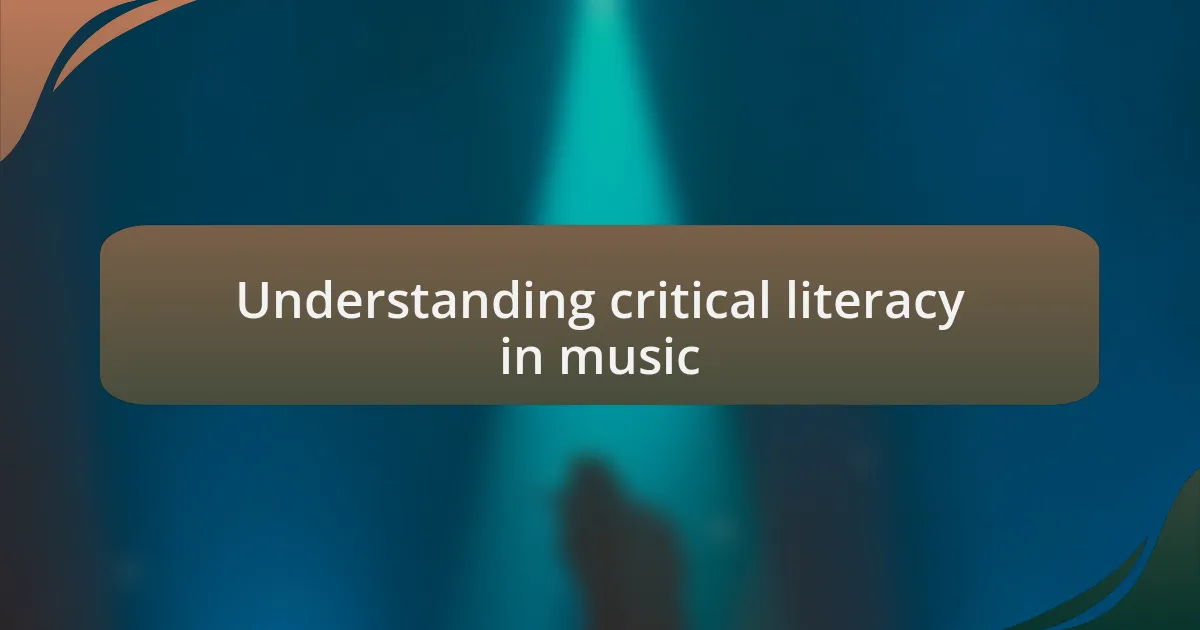
Understanding critical literacy in music
Understanding critical literacy in music goes beyond just reading notes or understanding lyrics; it’s about decoding the cultural and social contexts within which music exists. I remember a time when I sat in a classroom discussing Bob Dylan’s “The Times They Are a-Changin’,” and it struck me how deeply the song resonated with issues of social justice. How often do we listen to music without acknowledging the powerful messages woven into its fabric?
When I engage my students in conversations about the socio-political themes present in songs, I can see their eyes light up with realization. For instance, analyzing Kendrick Lamar’s reflections on race and identity allows them not only to appreciate the artistry but also to relate it to their own experiences. This critical inquiry sparks a deeper connection with music, inviting them to question and reflect: What does this song say about the world we live in?
Moreover, recognizing the ways in which power dynamics and cultural narratives shape our understanding of music fosters a more inclusive learning environment. I’ve had students from diverse backgrounds share their perspectives on songs that reflect their own identities, reminding me that critical literacy in music is not just about analysis—it’s about empathy and connection. Isn’t it fascinating how music can serve as a bridge between our personal stories and broader societal themes?
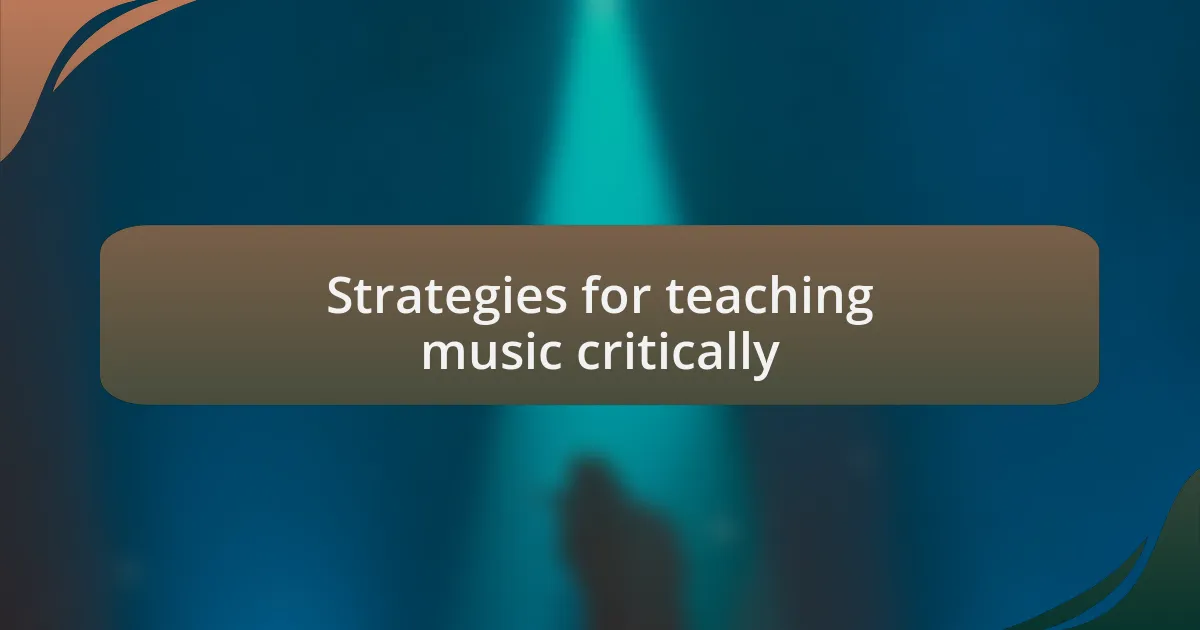
Strategies for teaching music critically
Engaging students in critical discussions about music can be an enriching experience for both teachers and learners. One strategy I’ve found effective is incorporating multimedia resources, such as music videos or interviews with artists. I remember a powerful moment during a lesson on Beyoncé’s “Formation.” Showing the video sparked an animated debate among my students about cultural representation and identity. It was rewarding to witness how a single piece of art could provoke such thoughtful dialogue. How often do we consider how visuals and narratives enhance our interpretation of music?
Another practical approach is using collaborative projects that encourage students to explore themes in music from multiple perspectives. For example, I once tasked a group to research different genres’ influences on social movements. As they delved into the sounds of protest music across decades, I could see them connecting the dots between history and contemporary issues. Ultimately, they presented their findings and highlighted how music has historically both reflected and instigated change. Isn’t it exciting to watch students draw connections that extend beyond the classroom?
Lastly, I prioritize creating a safe space for students to express their interpretations and feelings about songs. Inviting them to share personal stories related to the music we study fosters a deeper emotional connection. I recall a student who opened up about a song that resonated with her struggles, making our discussion not just an analytical exercise but a chance for vulnerability and shared experiences. This shift transforms our classroom into a community where critical literacy thrives, reminding us all of music’s profound impact on our lives. How can we shape our classrooms to empower every voice?
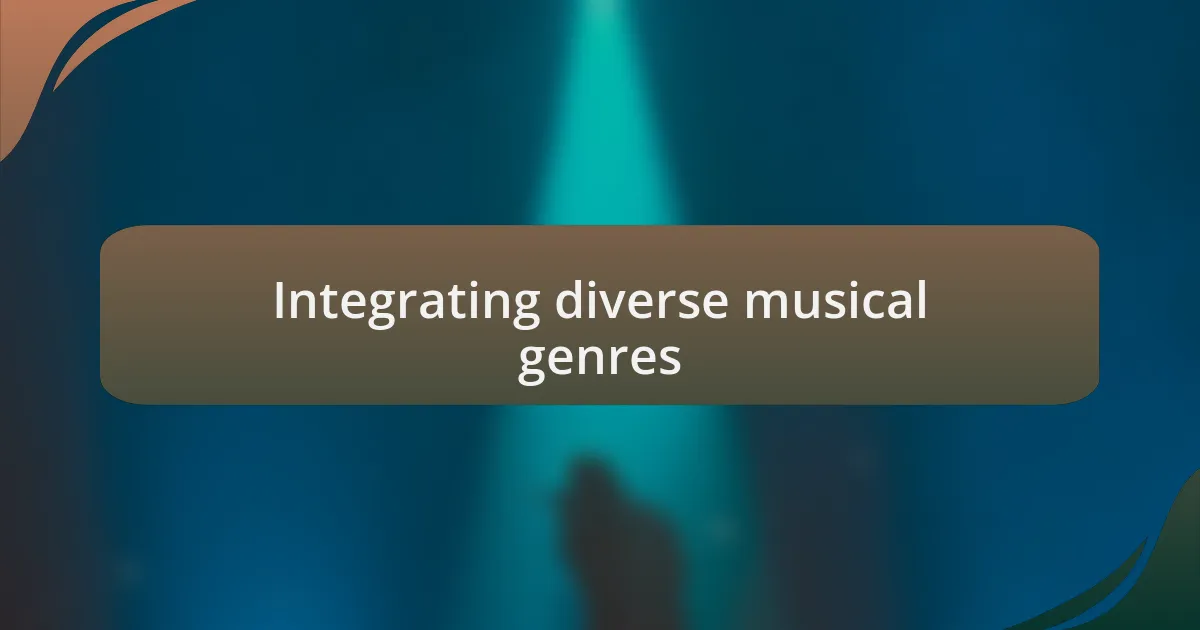
Integrating diverse musical genres
Integrating diverse musical genres in the classroom opens up a world of exploration and discussion. I once organized a listening session where we juxtaposed traditional folk music from various cultures with modern pop interpretations. As my students compared the storytelling methods across these genres, I was amazed at how they began to appreciate the depth of cultural heritage and innovation. What if we all viewed music not just as art, but as a living document of our shared experiences?
In another instance, I encouraged students to create their own mash-ups by blending different genres. One group combined hip-hop and classical elements to convey a powerful social message. Witnessing their creative process was thrilling; they weren’t just consuming music but actively engaging with it, making their voices heard in new and compelling ways. How often can we say that students feel empowered to reshape art in ways that reflect their unique perspectives?
I’ve also found that inviting local musicians from various genres to share their experiences adds a personal touch to the learning process. One musician spoke about the roots of blues music and its connection to the African American struggle. Students were spellbound, captivated not only by the music but by the history. This personal connection highlighted how music is an intersection of voices, stories, and emotions. Isn’t it incredible how a simple song can bridge past and present, fostering empathy and understanding among diverse groups?
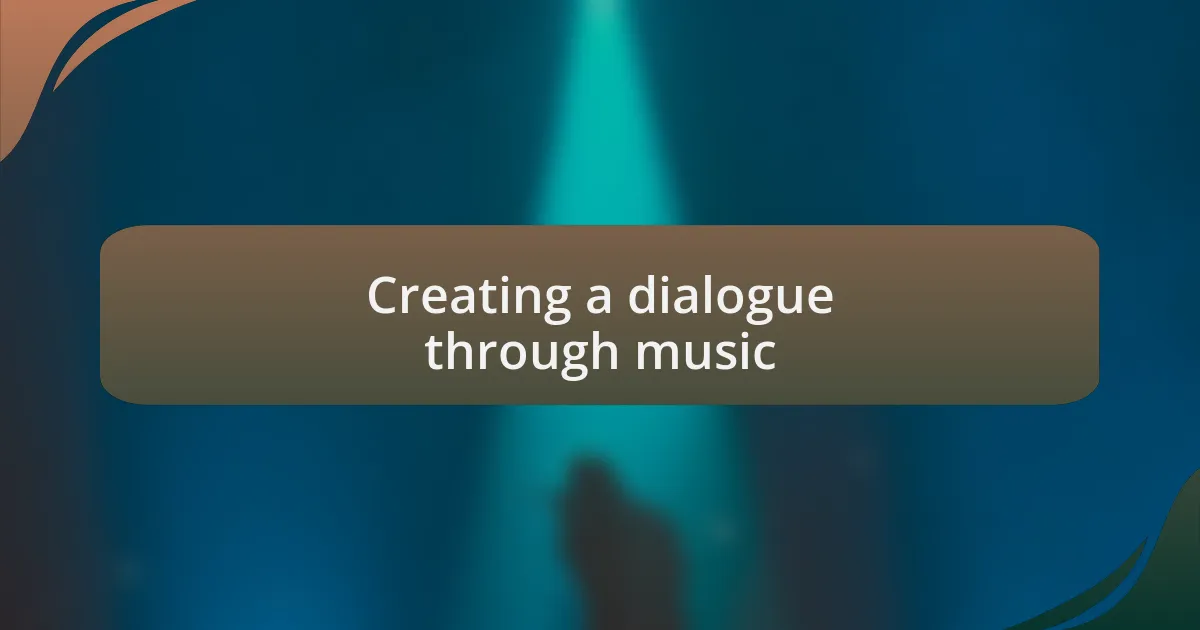
Creating a dialogue through music
Creating a dialogue through music can transform a classroom into a vibrant space of expression and connection. For instance, I once facilitated a discussion where students paired off to exchange their thoughts about songs that resonated with them. As they listened to each other, it was remarkable to see their faces light up with understanding and empathy, as if a bridge was built through shared experiences. How often do we find ourselves truly listening to one another’s stories?
During a project on protest songs, I encouraged students to research the events that inspired these pieces. As they delved into the historical context, a few shared personal stories of how certain issues affected their families. I was struck by the depth of their reflections; music became a means not only to discuss societal challenges but also to validate their feelings and experiences. Isn’t it empowering when students realize that their voices matter in a larger dialogue?
One memorable moment was when a student performed an original piece about her struggles with identity. The room felt electric—not just because of her talent, but because it opened up a safe space for others to share their own experiences. This kind of dialogue underscores the profound impact of music; it can spark conversations that might otherwise go unspoken. Can you imagine the richness of understanding that blossoms when students share their truths through music?
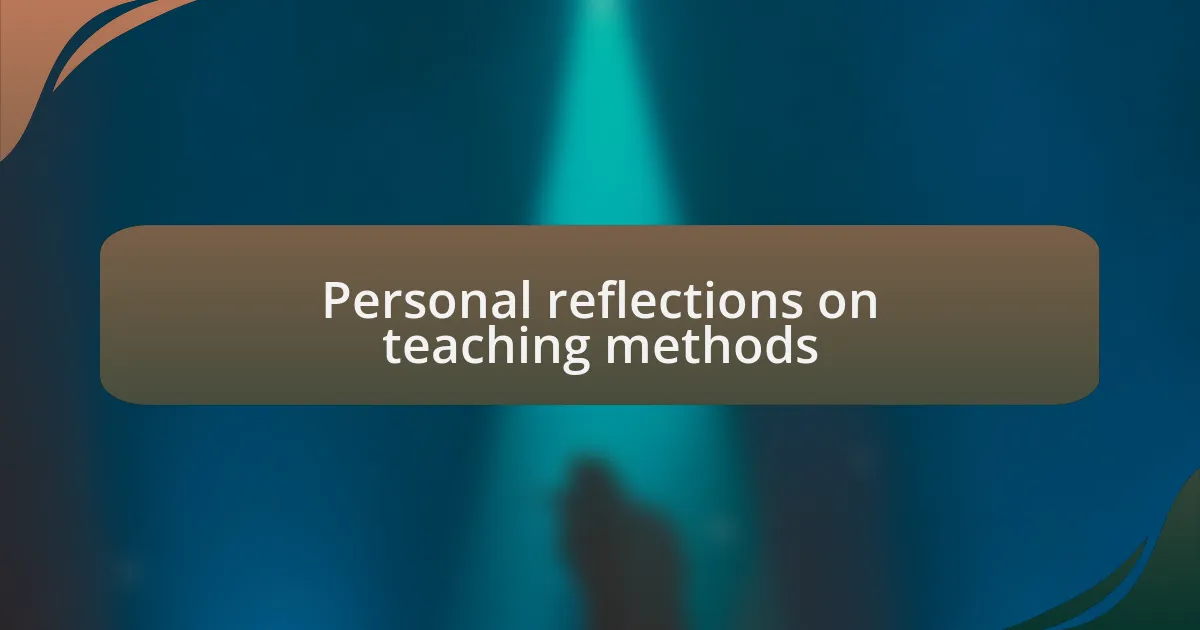
Personal reflections on teaching methods
Reflecting on my teaching methods, I often find that using collaborative projects enhances critical literacy in unique ways. Once, I organized a songwriting workshop where students collaborated on lyrics about their personal experiences. Watching them debate the message and rhythm was enlightening; their engagement was palpable, and it reminded me of how creativity can foster deeper understanding.
In another instance, I shared my own journey with a particular song that shaped my values. By opening up about my connection to the music, I noticed students began to feel comfortable sharing their own narratives. Isn’t it fascinating how vulnerability in a teacher can encourage students to explore their emotions and perspectives more freely?
I’ve also found that incorporating diverse musical genres into discussions amplifies voices that might otherwise go unheard. During a unit on global music traditions, students explored songs from various cultures and connected those themes to their own lives. It made me realize that music is truly a universal language—how often do we get the chance to learn from each other just through melody and lyric?

Assessing student engagement in music
Assessing student engagement in music can be quite revealing. I remember a time when I used informal check-ins during rehearsals, just to gauge the mood and interest levels in the group. Those moments often led to unexpected insights; students would share what they liked or felt disengaged about, and I realized that sometimes the most valuable feedback comes from a simple conversation.
One effective method I’ve found is to utilize reflective journals, encouraging students to express their thoughts about the music we’re studying. I once had a student write about how a particular piece resonated with her struggles as an immigrant. Seeing her connect personally to the music not only engaged her but also enriched the entire class’s perspective. Isn’t it compelling how music can become a mirror to our own experiences?
Additionally, I like to assess engagement through live performance opportunities, where students present their interpretations of songs. I vividly recall a student who was shy but blossomed during a solo performance. Watching him transform before our eyes was an incredible reminder of how powerful music can be in building confidence. Don’t you think creating those moments can ignite a deeper passion for music in our students?